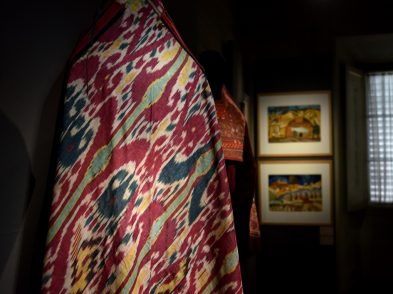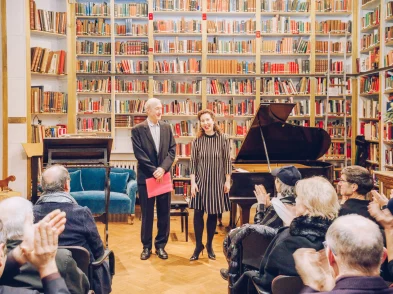Children learn to sing it in grade school, at Christmas, the stores pipe
it through their music systems and just about every Italian can hum the tune
and even knows the words. Often accompanied by the zampogna (the Italian version of the bagpipe), it is, of course, Tu scendi dalle stelle (‘You Come Down
from the Stars’), Italy’s most famous Christmas carol. But, if you ask most
people, few could tell you when, why or where it was written, let alone the
name of its composer-unless they happen to be theologians, confessors or
moralist philosophers, of whom he was made patron saint in 1950.
Tu
scendi dalle stelle was
composed by a priest named Alphonsus Maria de’ Liguori. Born the first of eight
children of a noble family in Marianella, near Naples, on September 27, 1696,
de’ Liguori, in keeping with his station, was educated at home by tutors. He
studied not only reading, writing and arithmetic but also painting and music,
at which he was particularly talented. At 12 years old, he played the
harpsichord and he would play the spinet all his life. He was not, however,
taught dancing or fencing because his devout parents considered these pursuits
dangerous for the soul.
In 1713, at only 16, he took a degree in civil
and canon law at the University of Naples. For the following 10 years, he very
successfully practised law, until, due to political interference and trickery,
he lost an important case for his client, Filippo Orsini Gravina, against
Cosimo III, the grand duke of Tuscany. His delusion was so great that he left
the law and, despite opposition from his father who wanted him to marry, became
a priest.
Ordained in December 1726, he began preaching to the poor and homeless
living in the slums in and around Naples. In 1730, exhausted from his work and
the after-effects of pneumonia, he was sent to Scala, a small mountain village
along the Amalfi coast, to recover. Here his congregation were shepherds and
peasant farmers, the most downtrodden members of society. He returned there in
1732 where, notwithstanding difficulties caused by the hostility of the court
of the Kingdom of Naples to the establishment of new holy orders, he founded
the Congregation of the Most Holy Redeemer, dedicated to the lowly and
dispossessed. He did so after a nun called Sister Maria Celeste Castarosa told
him it had been revealed to her that God had chosen him to do so. The men’s
congregation was approved by Pope Benedict XIV in 1749, the women’s in 1750.
A man of medium height with a large head of black hair and a beard, de’
Liguori dedicated his time not only to the congregation but to writing over 100
works, both technical treatises on theology and dogma, many of which are still
in print today, and popular religious texts that even the most humble could
comprehend and thus be converted through them.
He also wrote about 50 religious songs, the most celebrated being Tu scendi dalle stelle, which he
composed in December 1744, while he was staying at the Convent of the
Consolation in Deliceto, near Foggia, so it could be sung at the Christmas
service. It was not, however, published until a year later. What made this
carol so catching and would allow it to be passed down from generation to
generation was that its simple message was set to a melody in the easy-to-remember
6/8 time, the same used in the world-renowned Austrian carol, Stille Nacht (‘Silent Night’). Another,
perhaps even more beautiful, but less familiar, carol of his, written in the
Neapolitan dialect, is Quanno nascette
Ninno a Betlemme (‘When the Baby was Born in Bethlehem’).
In 1762, he was consecrated Bishop of
Sant’Agata de’ Goti, near Naples by Pope Clement XIII, a position he held until
1775, when he was forced to retire, suffering from deformative arthritis in his
back. He lived out his remaining years at the Redemptorist house in Nocera de’
Pagani where, deaf and almost blind, he died at 91 on August 1, 1787.
In recognition for his life and work, he was
beatified in 1831 and canonised in 1839. In 1871, Pope Pious IX proclaimed him
a Doctor of the Church. In its 2,000-year history, the Roman Catholic Church
has bestowed this title on only 33 saints whose writings have been
inspirational. Saint Alphonsus Maria de’ Liguori, whose congregation can be
found today in 77 countries around the world, was named Doctor Zelantissimus.







